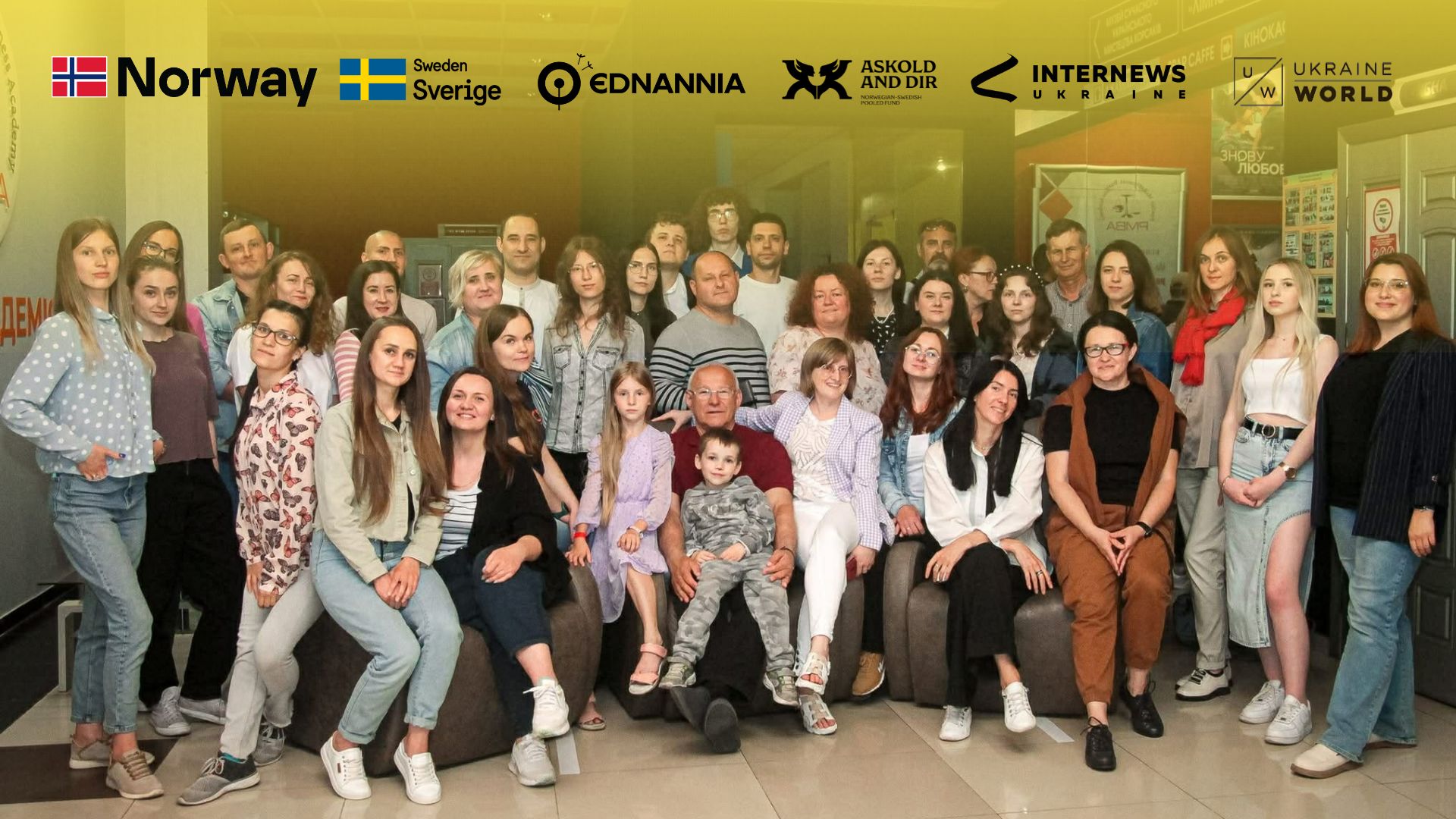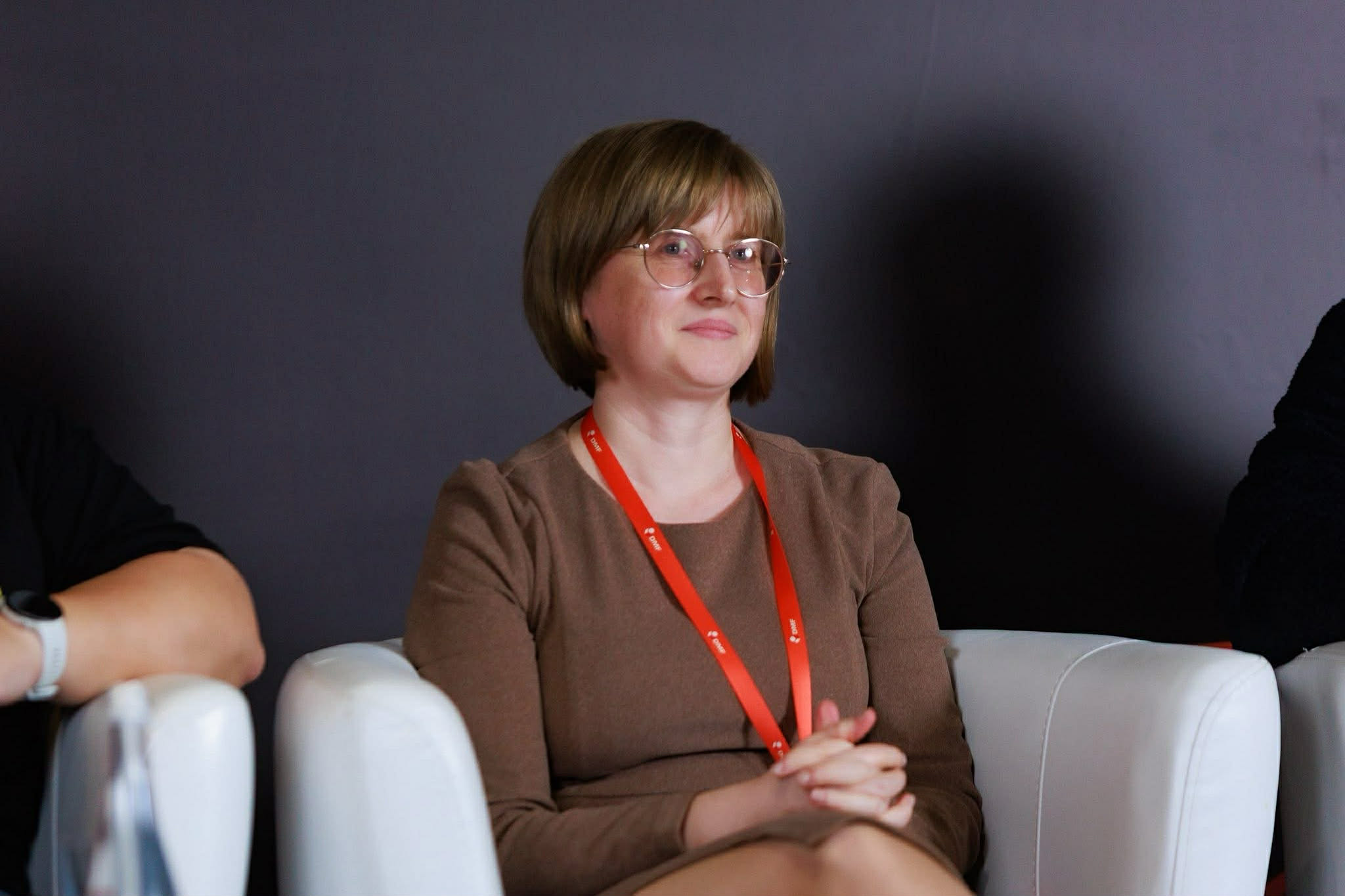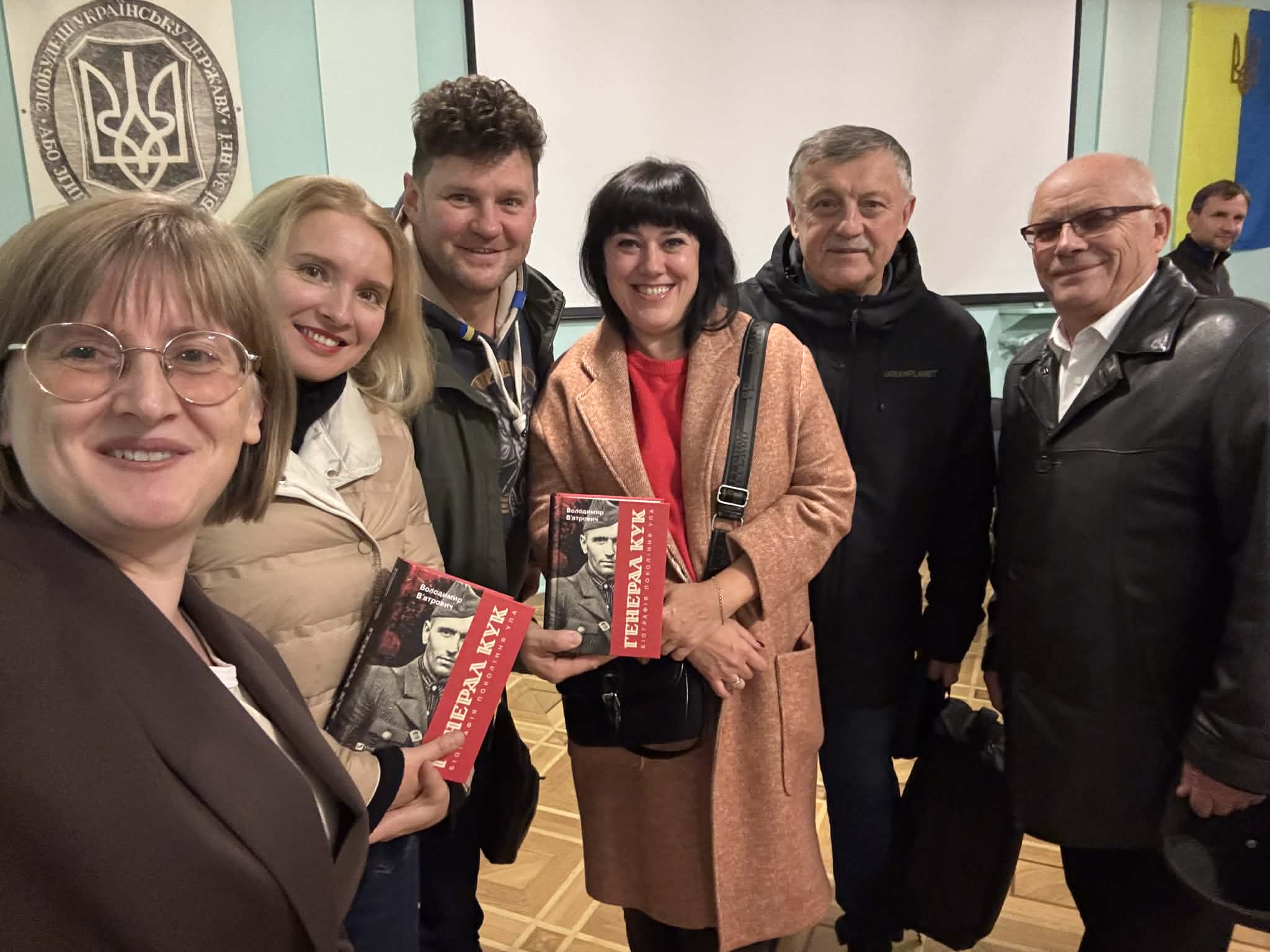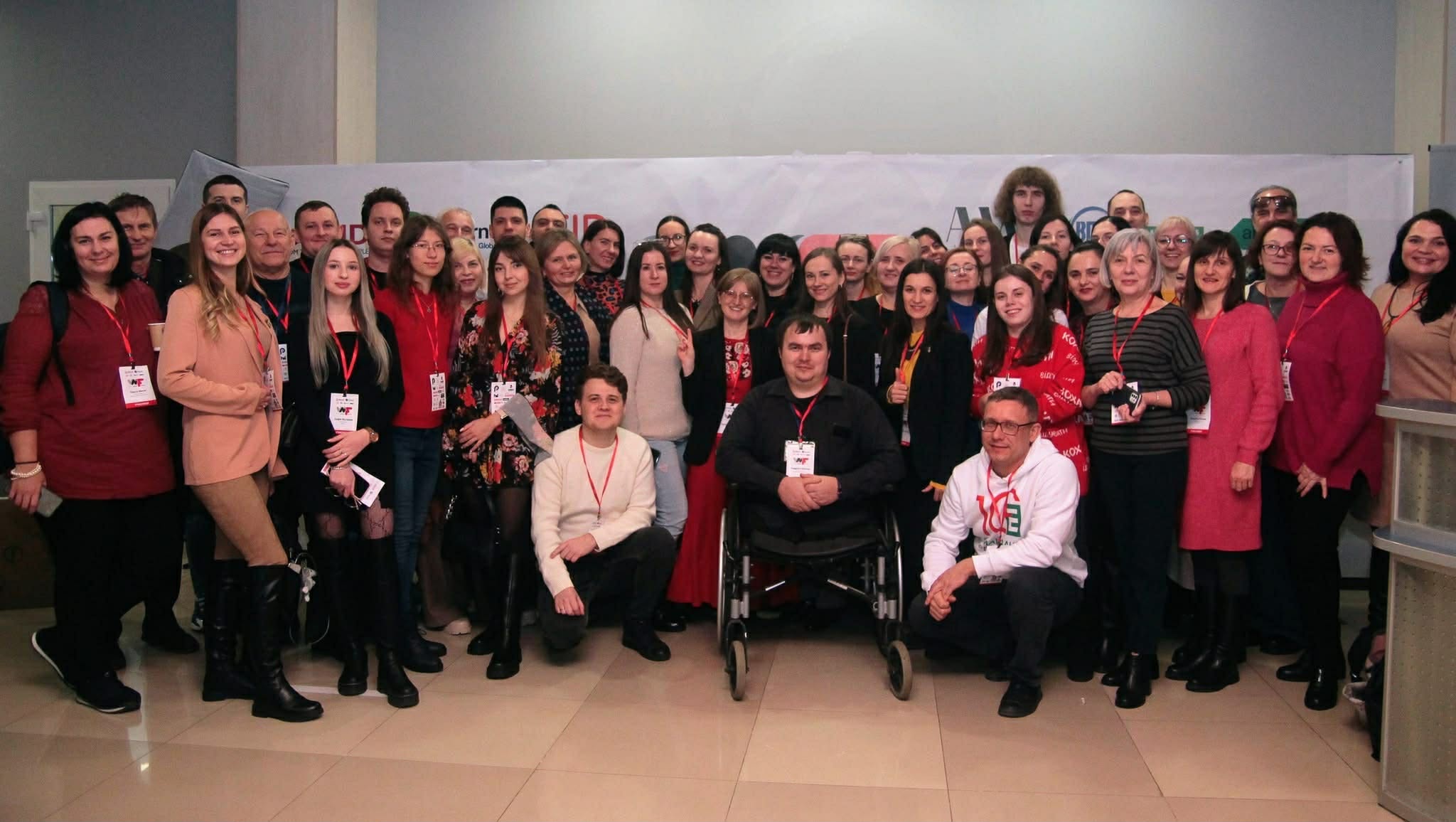
In the daily flow of breaking news, global headlines and national updates, it's easy to miss what's happening in Ukraine's towns, villages and communities.
Ukraine's strength lies not only in its capital or big cities, but in its vast regions and local efforts that keep the country alive.
This analysis is about voices that tell the local story:
inform, connect and remind us that every part of the country matters - especially for those who live there and for those who've had to leave.
We spoke with Natalia Pakhaichuk, journalist, media expert, and head of innovative projects at CID Media Group. She also leads the national hyperlocal media network Rayon, a unique ecosystem that amplifies the power of local journalism across nine oblasts of Ukraine.

Here we explore the problems this network aims to solve, the stories that show why the local voice matters and the daily challenges of keeping it alive.
The project was founded in 2015, when the decentralisation reform was just coming into focus and there was a clear lack of information about local life. Local newspapers had become outdated, often tied to local authorities, and many had ceased publication. As a result, communities were left without reliable local news sources.
So the idea was born: build a new kind of media -independent, rooted in community, and capable of rebuilding trust.
Before February 2022, Rayon focused on community life:amplifying local initiatives, grassroots leadership and day-to-day issues that defined each region.
But when Russia launched its full-scale invasion, everything changed.
Local news became critical infrastructure. For those who stayed, it offered verified updates and practical guidance. For those who fled, it served as a glimpse into their home.
Now Rayon.in.ua is Ukraine's national hyperlocal media network - a digital ecosystem of 63 local news websites covering 9 oblasts. It reaches over one million users every month, offering not just news but a sense of connection and care.
Each website is rooted in a specific community, a town, district or village, and is run by journalists who live there or know the area deeply. The network shares a common editorial platform, technical infrastructure and quality standards, but each outlet tells the stories of its own local context.
"Local media are the connective tissue of the country," Natalia tells UkraineWorld.

In many Ukrainian communities, trust in the media has collapsed. When people don't see themselves or their problems reflected in the news, they tune out - or worse, turn to unverified sources.
Rayon works differently. Each local newsroom is staffed by people who live in or near the communities they cover. They know the names of the teachers, the mood at the town hall, the local gossip and worries. That proximity changes everything.
Throughout Ukraine, especially in rural and frontline regions, people frequently rely on Telegram channels and Facebook groups to find news about their towns or communities. However, even when these sources may seem familiar, they are often unverified and open to manipulation.
The Rayon team has seen it firsthand: clickbait headlines seeded with pro-Kremlin talking points, disinformation about evacuation routes, or exaggerated stories meant to fuel panic.
This could be even worse when combined with low levels of media literacy. People don't always know how to verify sources or detect manipulation - especially when the content looks familiar and local.
Rayon journalists try to combat this through consistency and context: by offering daily, verified, community-based news, in Ukrainian, from trusted voices, the network fills the information gaps before propaganda moves in.
Many communities face communication gaps between authorities, NGOs and citizens. Decisions are secretive, announcements lack context and chances for participation are hindered by bureaucracy.
Rayon's platforms serve as bridges: publishing updates from city councils, tracking local budgets, interviewing mayors and covering public meetings. But they also tell the stories that formal reports leave out: what citizens are saying, what they're struggling with, what they expect.
When cities are occupied or people are forced to flee, staying connected to home can become more than just nostalgia - access to trusted local news helps preserve identity and dignity.
For those who stayed, Rayon was one of the few sources of verified updates
, often via VPNs or alternative domains. For those who left, the sites connected them to families, neighbourhoods, and their sense of place.
Journalists monitor local and Russian sources of information and maintain contact with those who remain to inform readers about the overall picture of what is happening.
Each outlet in the network covers a specific area, but the stories they publish circulate across the entire ecosystem. That means a reader in Rivne can learn what's happening in Mykolaiv, and someone in Volyn can follow updates from the southern border.
"We had a story from the south - about harvesting grapes. A soldier asked for leave just so he could help gather the harvest. It's a very fast process - if you don't pick it in time, it goes to waste. It surprised readers in other regions. " Natalia recalls.
By giving space to stories like this, Rayon reminds its readers: Ukraine is diverse, layered and interconnected.

Across Ukraine, civil society is quietly and persistently working to support communities in crisis. Local activists organise shelters, deliver aid, rebuild kindergartens, run trauma recovery workshops, defend the environment and teach media literacy. Yet their stories rarely make headlines.
"We noticed that a lot of good things are happening in small communities, but no one is talking about them. They don't have the resources or know how to communicate. And then it turns out that those who work quietly remain invisible."
To change that, Rayon launched Hromadskyi Rayon - a special project dedicated to telling the stories of civic initiatives.
The project highlights both well-established NGOs that have become national leaders and hyperlocal movements quietly transforming their communities.
Reporters talk to local organisations, interview women leaders, attend public events and document how change happens in real time.
Not everyone in Rayon's network started as a journalist, and that's exactly the point.
Some were librarians, others were local activists, recent graduates and people over 60 - all those who simply want their town to be seen.
Before joining, everyone goes through editorial training on verifying facts, writing clearly, asking questions, and working ethically. The central team provides ongoing mentorship, editorial support and tech infrastructure.

Many local journalists work close to the frontlines or in recently de-occupied areas and often juggle multiple roles - reporting, volunteering, even coordinating evacuations. So, there is a constant risk of burnout.
Financial uncertainty adds another layer of stress: even with strong audiences, sustaining independent media, especially in small towns, remains a challenging task.
Yet despite all this, the team isn't standing still. They're expanding projects such as Hromadskyi Rayon, deepening collaborations with local NGOs, and exploring ways to involve more young people in local journalism.
The goal? Not just to survive - but to keep growing, connecting, and making sure every community in Ukraine has a voice.
Rayon.in.ua keeps stories flowing across the map, connecting people who've stayed, fled, or returned.
At a time when war tries to isolate and fragment, this network quietly resists - by stitching the country together, story by story.
"In many villages and small towns, there simply aren't other sources of information. If not us, then no one. And that's a big responsibility."
Resilience lives in the daily, quiet courage of people who keep showing up and in the journalists who keep telling their stories.
interviewed by
The article is produced by UkraineWorld with the support of the Askold and Dir Fund as a part of the Strong Civil Society of Ukraine - a Driver towards Reforms and Democracy project, implemented by ISAR Ednannia, funded by Norway and Sweden. The contents of this publication are the sole responsibility of UkraineWorld and can in no way be taken to reflect the views the Government of Norway, the Government of Sweden and ISAR Ednannia.
